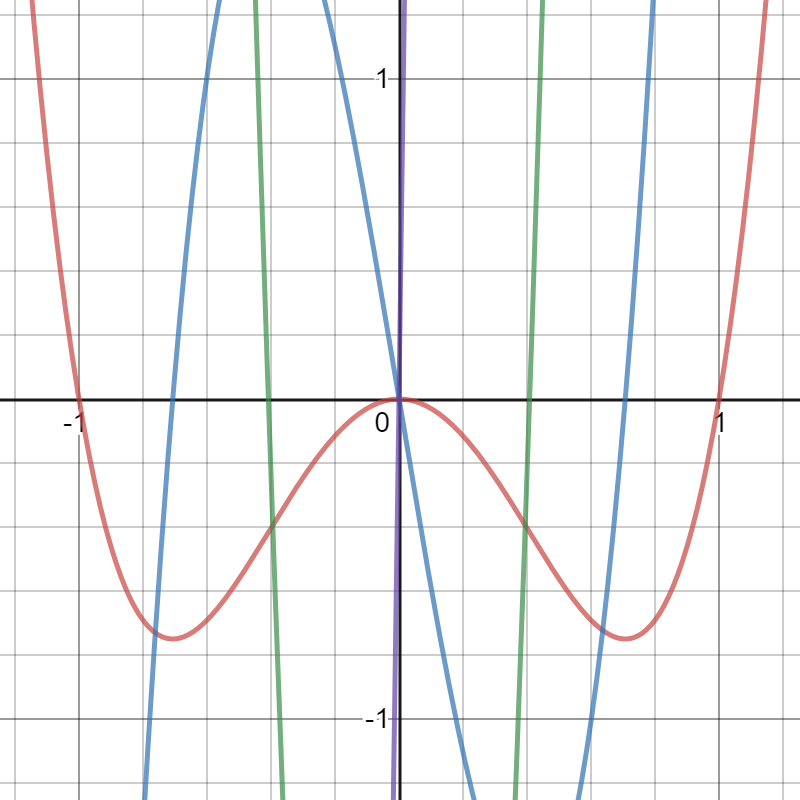The derivative of the fourth derivative f(4)(x) is called the fifth derivative. It is denoted as f(5)(x).
This is an uncommon derivative, but it’s sometimes used in physics where it’s defined as the fifth derivative of the position function with respect to time.
Fifth Derivative Example
Example question: Find the fifth derivative of 3x4 – 3x2.
Solution: Take the derivative five times. :
- f′(x) = 12x3 – 6x (first derivative)
- f′′(x) = 36x2 – 6 (second derivative)
- f′′(x) = 72x (third derivative)
- f4(x) = 72 (fourth derivative)
- f5(x) = 0 (fifth derivative)
For this example, the function has exponents, so I used the Power Rule for differentiation for the first two steps. When the function differentiated into a constant function, I used the derivative of a constant rule.

Snap, Crackle, and Pop
The fourth, fifth, and sixth derivatives are sometimes called snap, crackle, and pop respectively (in homage to Rice Krispies cereal). The terms were first mentioned by Codner et al, as cited in Scott, 1997 in a footnote:
“17. These terms were suggested by J. Codner, E. Francis, T. Bartels, J. Glass, and W. Jefferys, respectively, in response to a question posed on the
USENET sci.physics newsgroup.”
References
Scott, J. Some Simple Chaotic Jerk Functions in Am. J. Phys., Vol. 65, No. 6, June.
Viljoen, C & Van der Merwe, L. (1999). Elementary Statistics: Calculations & Interest for Business & Economics. Pearson South Africa.